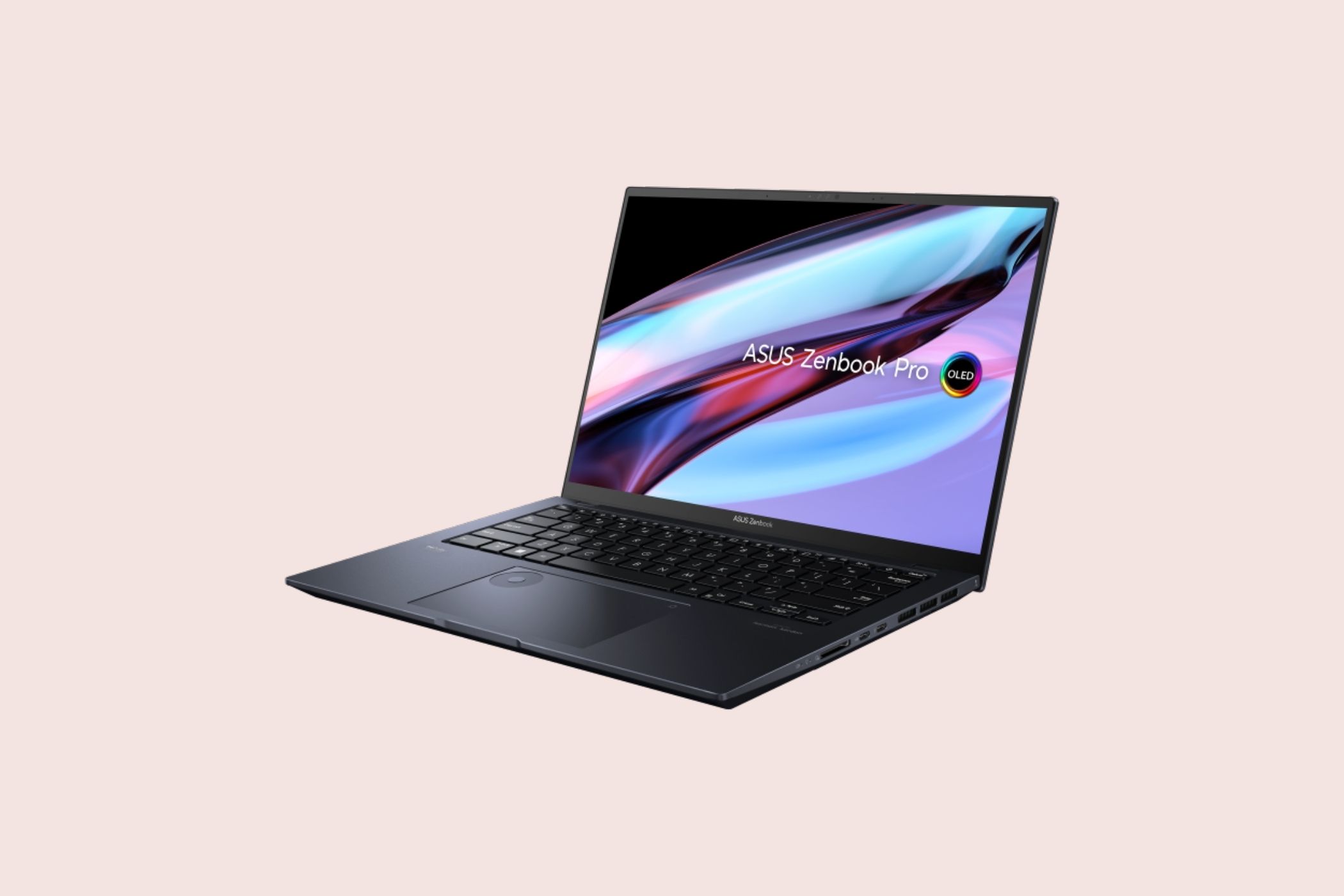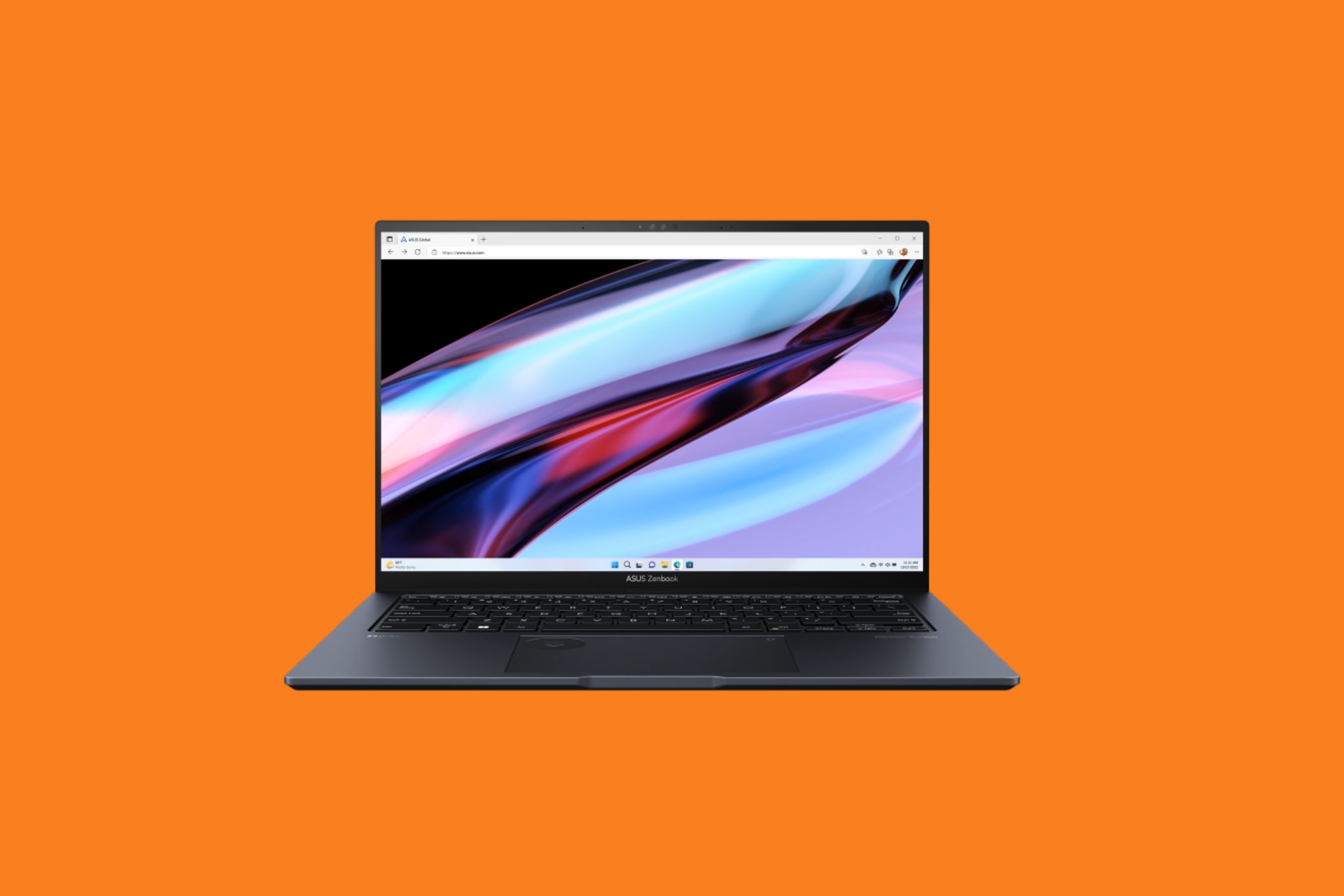-
Lenovo Slim Pro 9i
The Lenovo Slim Pro 9i is one of Lenovo's top-shelf laptops and comes with powerful hardware with a 13th-generation Intel CPU and a dedicated Nvidia GeForce RTX 40 series GPU. It features a gorgeous 14-inch mini-LED display that is ideal for creative content workloads.
Pros- Powerful perfoming hardware
- The mini-LED display is sharp and bright with 1,200 nits
- Lightweight and portable design
Cons- Weak battery performance
- 720p webcam
- Source: ASUS
Asus Zenbook Pro 14 OLED
The Asus Zenbook Pro 14 OLED is a powerful laptop that can handle a heavy workload while on the go. It features a beautiful 14.5-inch OLED display with a 2.8K resolution and a smooth 120Hz refresh rate. It also features a dedicated RTX 4070 GPU and a 13th-generation Intel CPU for design workloads.
Pros- OLED display has accurate color reproduction
- Powerful GPU and CPU pairing
- Asus DialPad
Cons- Loud fans
Key Takeaways
- Asus Zenbook Pro 14 OLED is a portable content creation powerhouse with a higher-end RTX 4070 option for GPU, making it the better laptop choice.
- Lenovo Slim Pro 9i offers a powerful content creation experience with 13th-gen Intel processors and Nvidia GeForce RTX 40 series GPUs, making it a good alternative to the Zenbook.
- Both laptops have high-quality displays, with the Slim Pro 9i featuring a bright mini-LED display and the Zenbook Pro 14 OLED boasting a 2.8K OLED display with a 120Hz refresh rate.
When it comes to Windows-based creator laptops, Asus and Lenovo develop some of the best laptops that can handle intensive workloads. Two of these laptops are the Lenovo Slim Pro 9i (2023) and the Asus Zenbook Pro 14 OLED. Both are sleek, portable laptops that feature Windows 11, dedicated GPUs, and powerful CPUs.
However, there are some distinct differences. The Asus Zenbook Pro 14 OLED, for instance, is a creative laptop that gives you a gorgeous OLED display, while the Lenovo Slim Pro 9i gives you one of the brightest mini-LED displays on the market. The question is, which one suits you better?
Pricing, availability, specs
The Lenovo Slim Pro 9i comes in 14-inch and 16-inch configurations, and at the time of writing, both models are unavailable from Lenovo, though Lenovo does note that they should be back in stock soon. The 16-inch version is available online from retailers such as B&H for a price of $2,150, while the 14-inch version is, at the time of publishing, only available from Newegg for $2,000. The 14-inch model gives the powerful 13th-generation Intel Core i7-13705H processor alongside 32GB of RAM for efficient multitasking. The 16-inch model that is in stock from B&H features similar specifications but with a larger 16-inch mini-LED display instead, and there's a dedicated RTX 4060 for an extra boost to graphics.
Switching over the Asus Zenbook Pro 14 OLED, you have three configurations available ranging from $1200 at the lowest price point, to $2100 at the highest. At that cheapest price point you get a 13th-generation Intel Core i7-1360P processor paired with 16GB of RAM and integrated Intel Iris Xe graphics. At the highest price point, you get a 13th-generation Intel Core i9-13900H processor, paired with 32GB of DDR5 RAM for efficient multitasking and a dedicated RTX 4070 graphics card for the price of $2100. All configurations come with the same 14.5-inch OLED touch display.
Lenovo Slim Pro 9i Asus Zenbook Pro 14 OLED Operating System Windows 11 Home Windows 11 CPU 14-inch: Intel Core i7-13705H; 16-inch: Intel Core i9-13905H Up to Intel Core i9-13 GPU 14-inch: Nvidia GeForce RTX 4050 (80W); 16-inch: Up to Nvidia GeForce RTX 4070 (100W) Up to RTX 4070 RAM 32GB LPDDR5x-6400 16GB DDR5 Storage 512GB/1TB PCIe 4.0 NVMe SSD Up to 2TB M.2 NVMe PCIE 4.0 SSD Display (Size, Resolution) 14.5-inch IPS, 16:10 aspect ratio, 3072x1920, 400 nits, 120Hz, touch14.5-inch mini-LED, 16:10 aspect ratio, 3072x1920, 1,200 nits, 165Hz, touch16-inch IPS, 16:10 aspect ratio, 3200x2000, 400 nits, 165Hz, touch16-inch mini-LED, 16:10 aspect ratio, 3200x2000, 1,200 nits, 165Hz, touch 14.5-inch OLED, 16:10 aspect ratio, 2880x1800, 500 nits, 120Hz, touch Camera 5MP webcam with IR 1080p IR camera Color Storm Gray Black Ports 14-inch: 1x Thunderbolt, 1x USB 3.2 Gen 1 Type-C, 2x USB Type-A, 1x HDMI, 3.5mm headphone jack, SD card reader; 16-inch: 1x Thunderbolt 4, 3x USB 3.2 Gen 1 Type-A, 1x HDMI, 3.5mm headphone jack, SD card reader 1x Thunderbolt 4, 1x USB 3.2 Gen 2 Type-C, 1x USB Type-A, 1x HDMI 2.1, 3.5mm headphone jack, SD card reader, Network Wi-Fi 6E + Bluetooth 5.1 Wi-Fi 6E, Bluetooth 5.3 Dimension 14-inch: 12.87 x 8.8 x 0.69 inches (326.95 x 223.54 x 17.6mm); 16-inch: 14.27x9.64x0.71 inches (362.44x244.82x18.16mm) 12.67 x 8.79 x 0.70 x 0.70" (32.18 x 22.33 x 1.79 cm) Weight 14-inch: 3.7 pounds (1.68kg); 16-inch: 4.92 pounds (2.23kg) 3.64 lbs (1.65 kg)
Design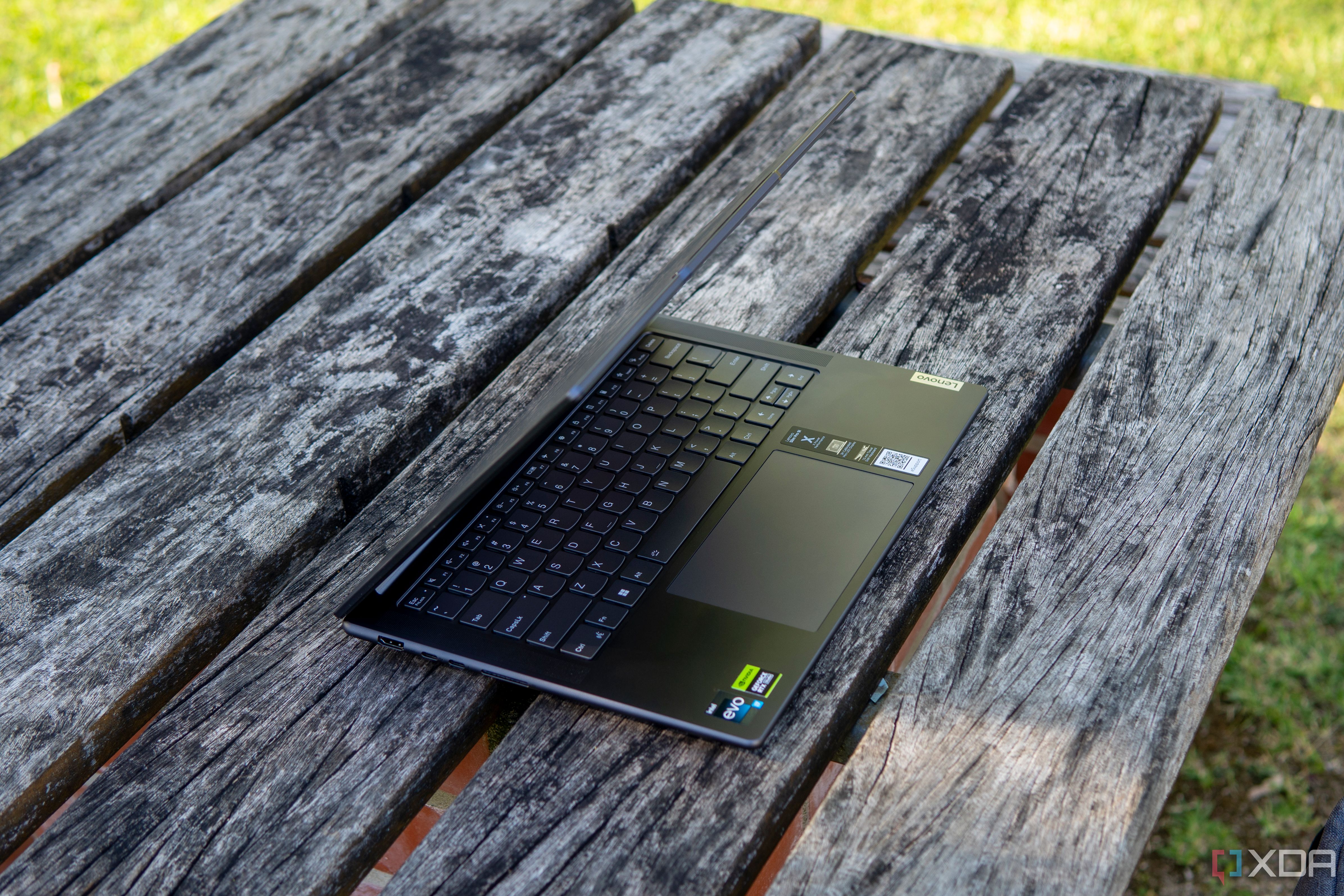
There's no major design difference between the 14-inch and 16-inch variations of the Lenovo Slim Pro 9i 2023 laptop aside from their display size and subsequent weight differences. Both models feature a fully aluminum body, giving the Slim Pro 9i not just a premium look, but a premium feel as well. Granted, it does come at the cost of weight, with the 14-inch model weighing 3.7 pounds, and the 16-inch model being considerably hefty at 4.92 pounds.
There's a healthy variety of ports on both sizes, with two Thunderbolt 4 portS, tWO USB Type-A ports, HDMI, a 3.5mm headphone jack, and there's even an SD card reader for any photos or videos you have.
Moving on to the Zenbook Pro 14 OLED, there's a subdued look, with a black clamshell design that utilizes a metal chassis that's incredibly durable. Asus claims that the chassis is MIL-STD-810 certified, giving it a rugged design that is capable of surviving knocks, drops, and bumps that come with a busy, on the go life. The metal chassis does give the Zenbook Pro 14 OLED a comfortable typing experience that's stable. As you would expect, the metal chassis does add a bit of weight to the laptop, which weighs 3.6 lbs. It's marginally lighter than the 14-inch version of the Slim Pro 9i from Lenovo, and both laptops are portable, but they do come with a bit of heft due to their high quality components.
The Zenbook Pro 14 features a similar port selection to the 14-inch model of the Slim Pro 9i. It features a Thunderbolt 4 port alongside a USB-C port, an HDMI 2.1, and only one USB Type-A port. There is an SD card reader for photographers or a videographer, just as there was on the Slim Pro 9i. The port selection on both of these laptops is good, and it should be enough to make most creative pros happy.
Display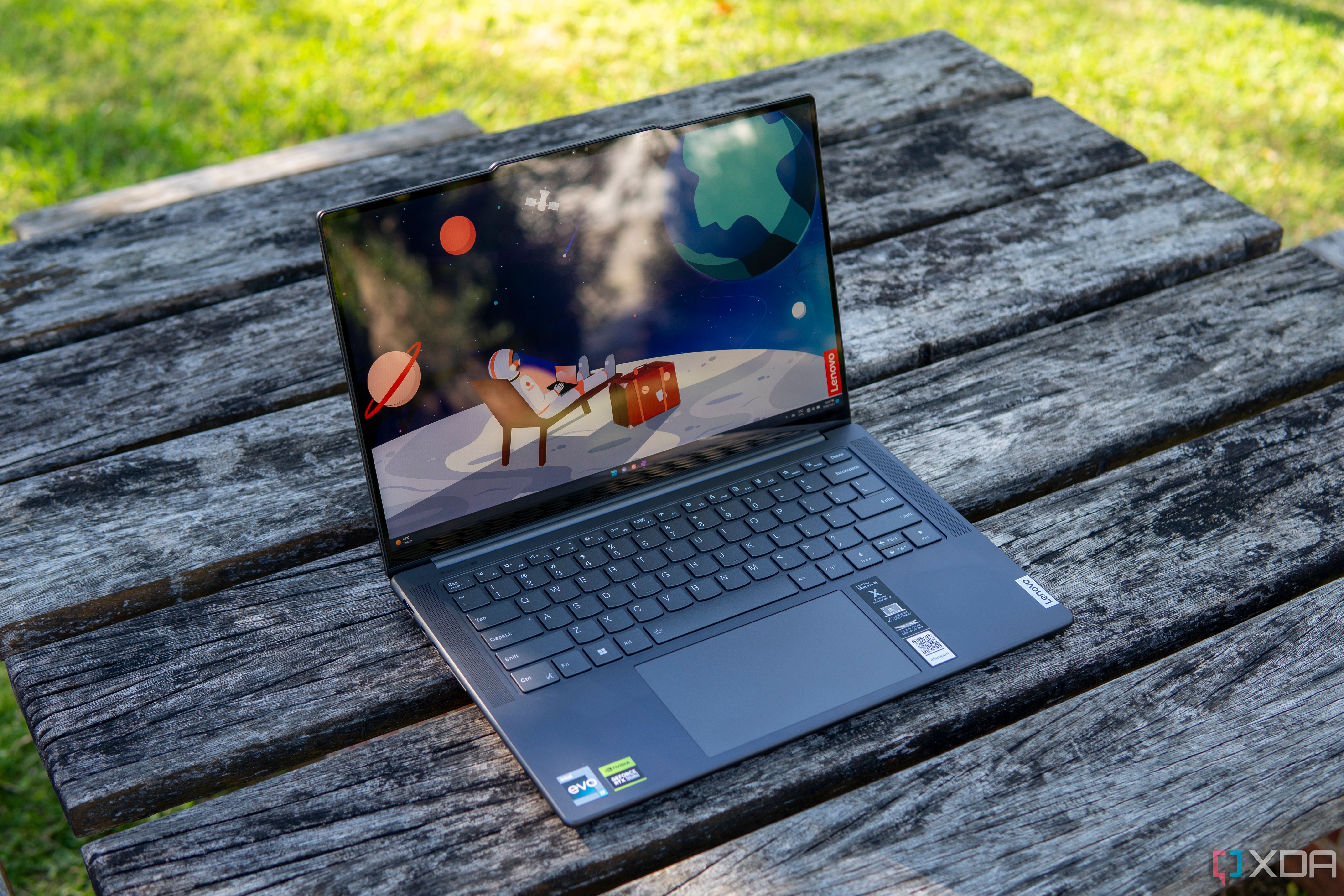
The display is going to be the centerpiece of any content creation laptop, and it's going to be our first major difference between these two. Starting with the Lenovo Slim Pro 9i, the display in both the 14-inch and 16-inch models utilize mini-LED technology which features over 1,200 nits of brightness. The 14-inch model features a 3072x1920 resolution, while the 16-inch model goes higher with a 3200x2000 resolution, and both models feature a smooth 165Hz refresh rate.
Lenovo claims that this display covers 100% of the DCI-P3, sRGB, and Adobe RGB color gamuts. However, our own review of the Slim Pro 9i noted that the actual display performance falls a bit short of these claims. Another thing to be aware of is that since the Slim Pro 9i features a glass touchscreen, you will not have great conditions if you enjoy working outside as the screen is very reflective.
While it's not as bright, the 14.5-inch OLED touch display that the Asus Zenbook 14 Pro OLED boasts is plenty bright; ASUS claims it features 550 nits of brightness available for HDR content and 400 nits of brightness for non-HDR content. Asus claims that the ZenBook Pro 14 OLED has 133% coverage of the sRGB color gamut and 100% of the DCI-P3 color gamut. There's also a 120Hz refresh rate, so fast-moving content appears smooth, although not as smooth as the 165 Hz refresh rate of the Slim Pro 9i.
From personal experience, I've had better luck with OLED displays correctly recreating color than I have had with mini-LED displays, but we, unfortunately, haven't been able to review the Zenbook Pro 14 OLED just yet, so we can't confirm these numbers. Fast-paced content will look smooth, though, thanks to a 120Hz refresh rate.
Both laptops feature webcams, and we're happy to report that the Zenbook 14 Pro OLED is another example of Asus upgrading new models of their laptops to include a 1080p webcam. It's a big improvement over the 720p webcam that came with prior Zenbooks, and it's a trend we're more than happy to see from Asus and other laptop manufacturers in 2023. Lenovo's Slim Pro 9i, on the other hand, features a 1440p webcam, which sounds great on paper, but in our review, we found it to be surprisingly poor. Our reviewer found that regardless of light, pictures and videos appeared grainy, and the problem was worse when tested in low light. Both laptops' webcams have IR support, so you will be able to use Windows Hello with either laptop.
Performance and battery life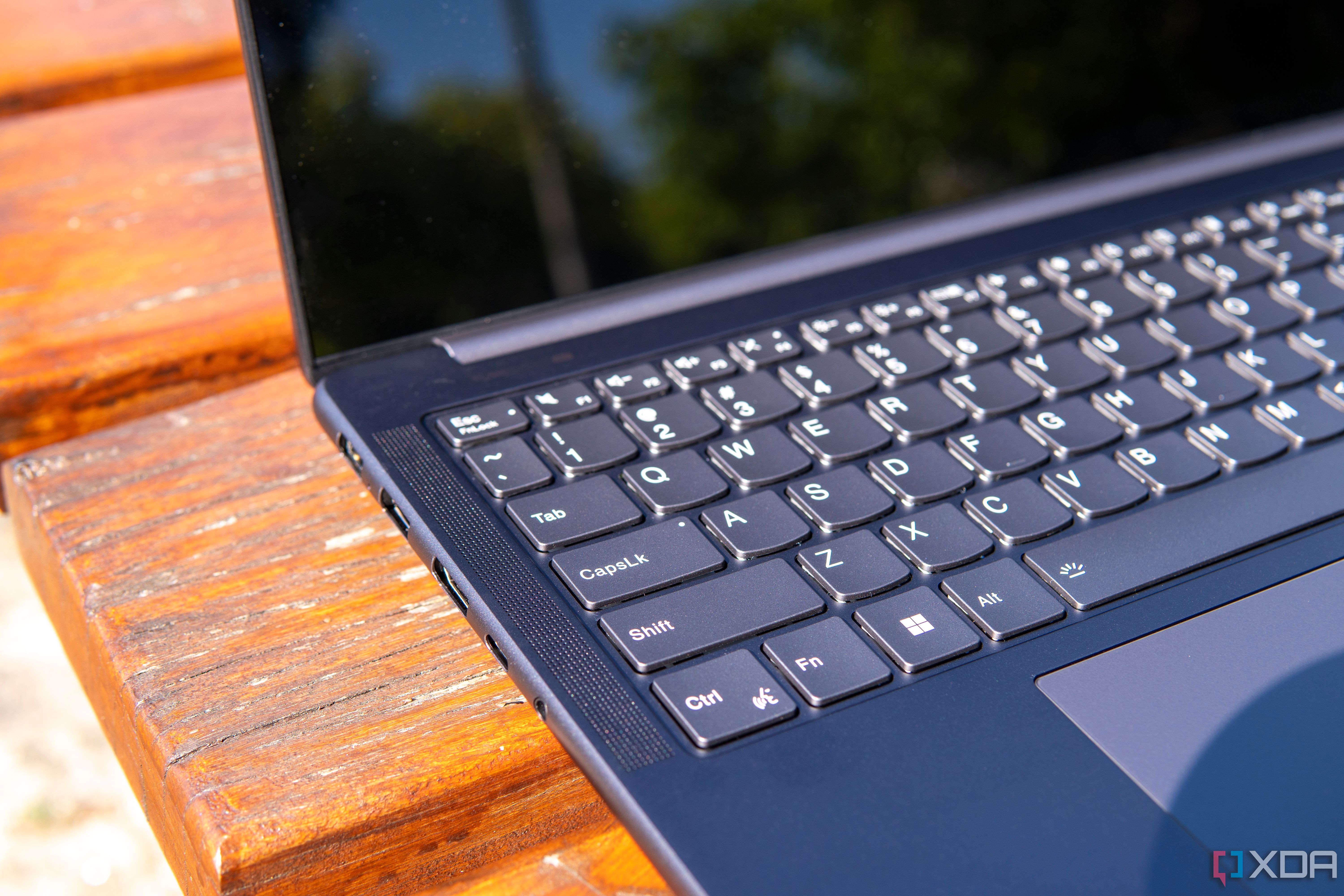
The Lenovo Slim Pro 9i, the 16-inch model that is currently in stock, comes with the 13th-generation Intel Core i9-13905H CPU. The 14-inch models that we are taking a look at in this article come with the Intel Core i7-13705H processor, which has 14 cores of processing power at a base clock speed of 3.70 GHz that can be boosted up to 5.0 GHz. This delivers enough power for light content creation tasks, and the laptop comes with a dedicated GPU with the RTX 4050 for a better design workspace. This also lets you do some light gaming on the Slim Pro 9i, but don't expect to play any modern releases at high settings.
We also found battery life to be decent, especially with how power-hungry the specs of the Slim Pro 9i are. The 14-inch model battery we saw range from 4 hours and 50 minutes to 5 and a half hours at the upper end. Creative applications like those found in the Adobe suite tend to have a negative effect on laptop battery life as they are so power-hungry. If you plan on using the Slim Pro 9i, or any creator laptop for that matter, you will want to make sure you bring your charger with you.
Switching over the Asus Zenbook Pro 14 OLED, there are three configurations available. The highest configuration features an Intel Core i9-13900H processor, while the mid-range configuration features a slower Core i7-13700H, and the cheapest option comes with a Core i5-13500H. If you are buying this laptop for content creation, we suggest going with the i9-13900H, as this is going to give you the best experience when it comes to creative workflows. Out-of-the-box, the Zenbook Pro 14 OLED has 16GB of DDR5 memory soldered to the motherboard, but there is an available DDR5 SO-DIMM slot if you want to expand the memory all the way up to 48GB. The Zenbook Pro 14 OLED also features a dedicated graphics card, with the options being an RTX 4060 or an RTX 4070, both of which are great laptop GPUs for content creation, with the 4070 being one of the best mobile GPUs for content creators.
The Zenbook Pro 14 OLED also includes the Asus DialPad, which rests on the trackpad. It's a neat rotary trackpad that is designed to work with the Adobe Suite and other standard creative applications, and it gives you a little more control over your workflow. The dial can be used to control toolbars, and it's useful in making selections while video editing.
Which is right for you?
Both of these laptops are some of the best creator laptops that run Windows 11. Choosing between the two will depend on your specific needs and budget, but the Asus Zenbook Pro 14 OLED is the better laptop. You get a portable content creation powerhouse that comes with a higher-end RTX 4070 option for GPU, allowing you to take your graphics workloads a bit further. By no means, though, is the Slim Pro 9i a bad laptop. We had a great time testing it, and it's a capable machine, but when it comes to color accuracy and specifications, the Zenbook Pro 14 OLED comes out on top.
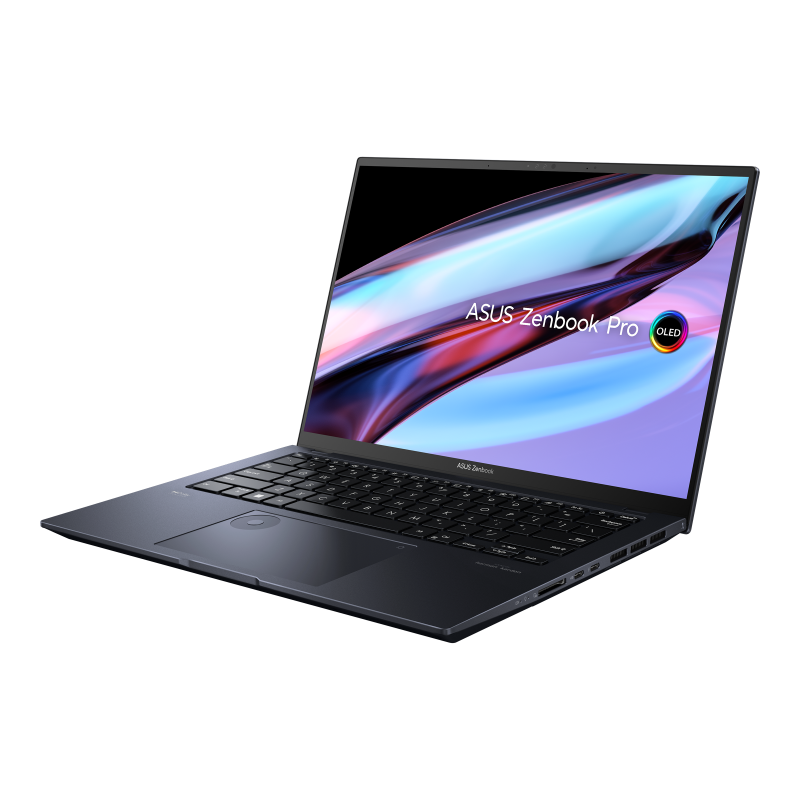
Asus Zenbook Pro 14 OLED
The Asus Zenbook Pro 14 OLED is a powerful laptop that can handle a heavy workload while on the go. It features a beautiful 14.5-inch OLED display with a 2.8K resolution and a smooth 120Hz refresh rate. It also features a dedicated RTX 4070 GPU and a 13th-generation Intel CPU for design workloads.
If you want something that still offers a powerful content creation experience but doesn't need the color accuracy of the Zenbook's OLED display, the Slim Pro 9i is a good alternative. It features powerful 13th-generation Intel Core H-series processors, so you still get a powerful experience for video editing or even rendering tasks. The screen is plenty bright, especially when used indoors, and the content still looks great. In terms of screen size, you may find it easier to work on a 16-inch display, and in that case, the Slim Pro 9i is the laptop for you.
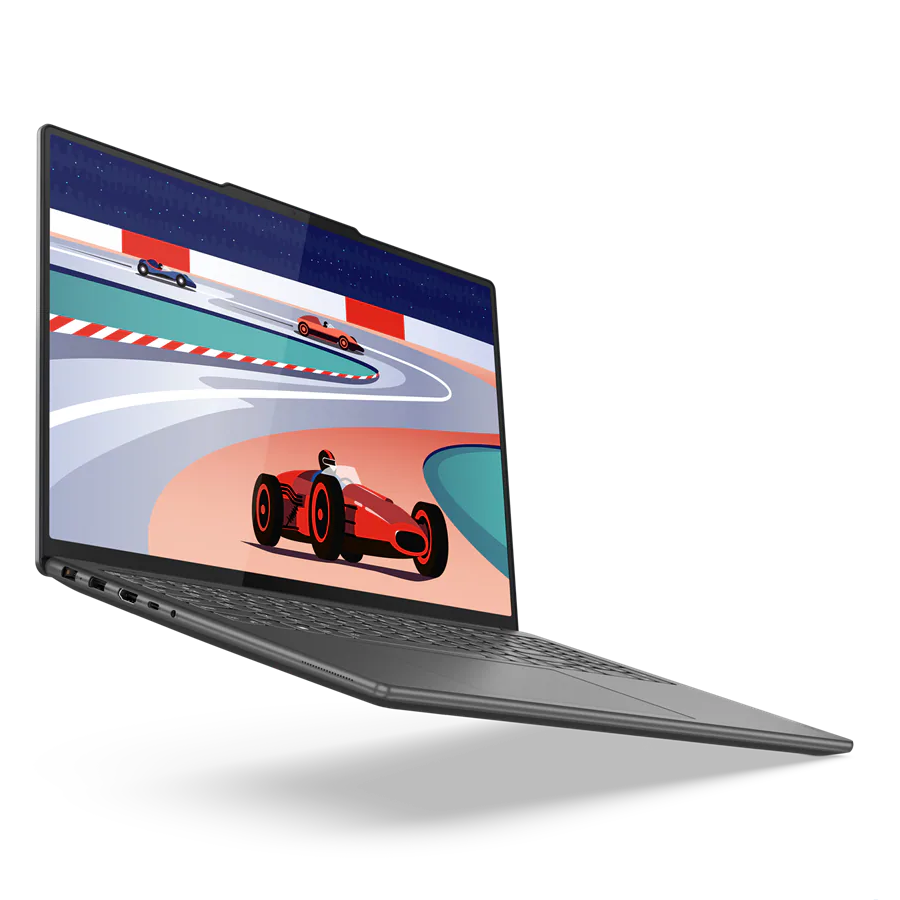
Lenovo Slim Pro 9i
The Lenovo Slim Pro 9i is a powerful laptop for creative professionals, with 13th-generation Intel Core processors and Nvidia GeForce RTX 40 series GPUs.

